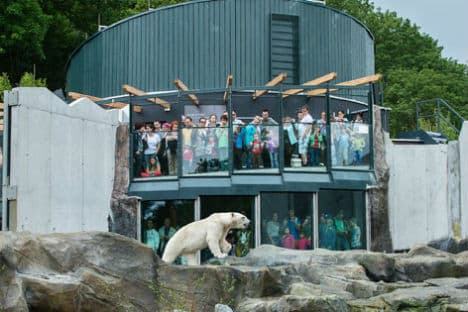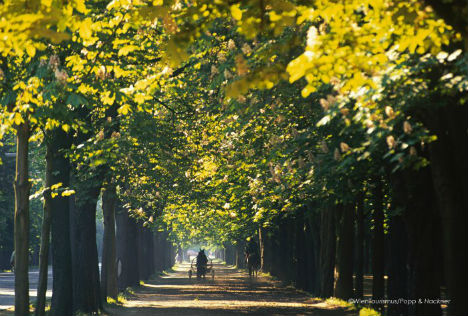Vienna works to combat urban heat effect

Scientists in Vienna are working on a project to green the city in an effort to combat the Urban Heat Island (UHI) effect - where urban air temperatures become higher than those of rural areas during the summer months as heat is absorbed by buildings and street surfaces.
As the mercury rises to close to 40C the urban centre can become unbearably sticky, and cause respiratory problems for vulnerable people. As climate change brings longer stretches of hotter weather to central Europe, experts are worried about the health of city dwellers who can’t escape the urban heat island.
Vienna is one of the first European cities to set up an ‘Urban Heat Islands Strategic Plan’, which aims to reduce the effects of UHI and raise awareness about the importance of parks and green, shady spaces in the city.
Vienna’s central districts are on average 4 or 5C hotter than the suburbs - and as much as 12C hotter than the countryside. Heat stored in buildings and roads and emitted by factories and cars - plus a lack of cooling vegetation means that the inner city barely cools down at night, leaving some residents unable to get a good night’s sleep.
Between 1961 and 1990 Vienna had on average 9.6 hot days a year (30C or more) but from 2010 this figure has risen to an average of 15.2 days.
"Further efforts are needed to make sure we can effectively counter the negative climatic impact of urban heat sources," Karin Büchl-Krammerstätter, head of the MA 22 environment department told the ORF.

A great place to cool off - Vienna's Prater. Photo: Wien Tourismus
It all comes down to having more green spaces in the city - whether that is parks, allotments, trees or green roofs. New green spaces are already planned for the Hauptbahnhof, the Seestadt Aspern and Donaustadt (including fruit orchards in Seestadt and a cherry tree park in Donaustadt).
There are also plans to create more open water spaces and plant more trees to provide shade on the streets. City residents are being asked to help by greening their courtyards and rooftops. “Every single plant pot makes a difference and acts like a little air-conditioning unit,” Büchl-Krammerstätter said.
Older people, as well as the chronically ill and people from socially disadvantaged groups are more affected by the heat. High temperatures also present a challenge for Austria’s water suppliers as demand increases during the summer months.
Comments
See Also
As the mercury rises to close to 40C the urban centre can become unbearably sticky, and cause respiratory problems for vulnerable people. As climate change brings longer stretches of hotter weather to central Europe, experts are worried about the health of city dwellers who can’t escape the urban heat island.
Vienna is one of the first European cities to set up an ‘Urban Heat Islands Strategic Plan’, which aims to reduce the effects of UHI and raise awareness about the importance of parks and green, shady spaces in the city.
Vienna’s central districts are on average 4 or 5C hotter than the suburbs - and as much as 12C hotter than the countryside. Heat stored in buildings and roads and emitted by factories and cars - plus a lack of cooling vegetation means that the inner city barely cools down at night, leaving some residents unable to get a good night’s sleep.
Between 1961 and 1990 Vienna had on average 9.6 hot days a year (30C or more) but from 2010 this figure has risen to an average of 15.2 days.
"Further efforts are needed to make sure we can effectively counter the negative climatic impact of urban heat sources," Karin Büchl-Krammerstätter, head of the MA 22 environment department told the ORF.

A great place to cool off - Vienna's Prater. Photo: Wien Tourismus
It all comes down to having more green spaces in the city - whether that is parks, allotments, trees or green roofs. New green spaces are already planned for the Hauptbahnhof, the Seestadt Aspern and Donaustadt (including fruit orchards in Seestadt and a cherry tree park in Donaustadt).
There are also plans to create more open water spaces and plant more trees to provide shade on the streets. City residents are being asked to help by greening their courtyards and rooftops. “Every single plant pot makes a difference and acts like a little air-conditioning unit,” Büchl-Krammerstätter said.
Older people, as well as the chronically ill and people from socially disadvantaged groups are more affected by the heat. High temperatures also present a challenge for Austria’s water suppliers as demand increases during the summer months.
Join the conversation in our comments section below. Share your own views and experience and if you have a question or suggestion for our journalists then email us at [email protected].
Please keep comments civil, constructive and on topic – and make sure to read our terms of use before getting involved.
Please log in here to leave a comment.